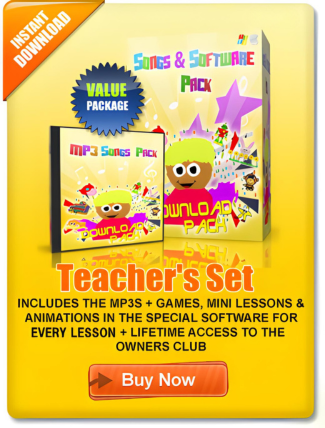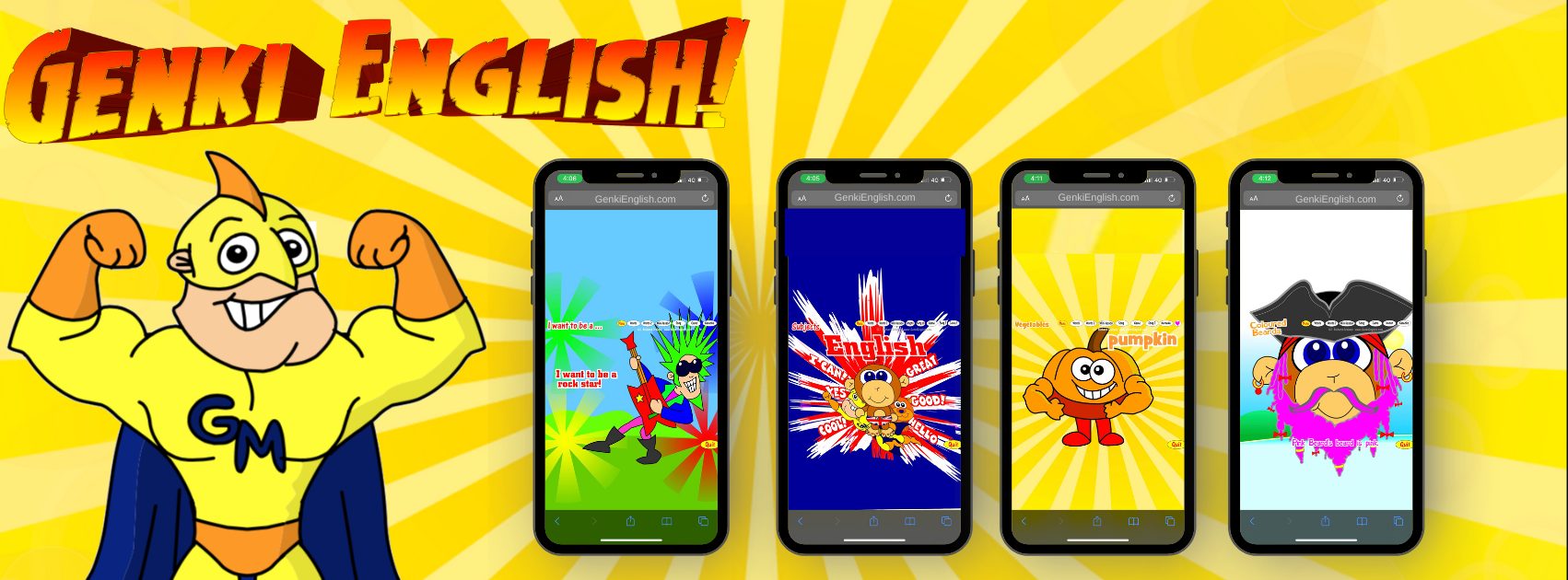Had another day of testing Genki English with adult classes.Β Instead ofΒ the traditional “done that”, it was a case of getting them able to use the English fluently, and seeing if we could have a great time doing it…
Class 1 – Coffee Morning Class
People who have the time to turn up at 10AM on a Wednesday morning are probably less than likely to be high flying business people so I kept things nice and easy. Again the aim was to find out which themes they need and which activities work well with them. So after the Disco Warm Up and intro motivation rules, I started throwing a few questions at them as they were supposed to be higher than yesterday’s classes. The only thing they picked up on was “When is your birthday?” Even so they were having problems with the months, so I decided to run through the song. The Japanese sounding intro wasn’t popular, but learning the words with the rest of the song and animations was. So then as an activity I got them to line up in birthday order, which was easy except for two people who were born in January and they didn’t know how to say which day.
It’s always a good thing to be flexible in lessons and if something crops up like this then run with it, they’re much likely to learn something if they picked up on that they need it. So first we did the normal numbers song to plug the few gaps in the numbers they knew and then the 13 to 32 song. Again the songs made it really easy to teach and they were well, happy. Then I did the “13, 30, 14, 40” game from CD8 to get them able to distinguish between “teen” and “ty” They really liked the game, so I also did the “Do you have any brothers & sisters?” computer game from CD7 just as a bit of fun and they were asking to do more! Great. It was in general a pretty relaxed pace of class and using the computer so much really gave me a lot of spare time as the teacher whilst the students were busy picking up on the English. Them wanting to do more computer stuff is also great news for when we come to sell the download pack in China!
Then I wanted to move on to do the 1st, 2nd, 3rd etc. ordinal numbers so they could say their birthdays. Not having any software here really slowed things down! Even using gestures and still having lots of smiles, not having the computer to show the pictures on the big screen and speaking the words in different voices really felt like a let down after the previous songs. This isn’t a theme I usually teach to kids (there are many more important ones!) but I think I’ll have to make a song and software for it for adults. I don’t know but the computer really does make things seem effortless, I guess because it also takes away the pressure of remembering what to do next as well.
They did sort of get it eventually and we played the timebomb unlucky 13 game this time with 1st, 2nd, 3rd etc.
Then to finish off we did the How much? song. Again it’s fluency that we are going for here. They “had done” the English before, but couldn’t use it, it just wouldn’t come out of their mouths until we’d done the song. They’ll still need a review in the next lesson, but they were much more confident and able to say most of the numbers quickly and use the phrases without any hesitation. Which is what we aim to do!
Then after a couple of hours of computer work I had two …
Chinese Lessons for Me
There’s no point me trying to introduce my way of teaching here if I don’t use it to learn the local language myself. So I asked two of the teachers to give me Chinese lessons. It was also good to see how they normally teach. It was really good of them to take the time out and it really helped me. 1 on 1 lessons are probably the most difficult, but a couple of things I would have picked up on:
![]() Instead of introducing something and practice it in context e.g. with a Q&A structure, they just moved on to the next phrase. I usually like to do practice skits and ask each other questions. Especially if they are open questions with different answers it keeps things interesting. The GE games are just the same thing with a touch of adrenaline.
Instead of introducing something and practice it in context e.g. with a Q&A structure, they just moved on to the next phrase. I usually like to do practice skits and ask each other questions. Especially if they are open questions with different answers it keeps things interesting. The GE games are just the same thing with a touch of adrenaline.
![]() Then when we came back to review the phrases, instead of saying something to me to elicit the response they wanted to check e.g. saying something like “I live in New York” where I could have said the phrase I’d just learnt “really?”, they just pointed to the word on the page and asked me to say what it is.
Then when we came back to review the phrases, instead of saying something to me to elicit the response they wanted to check e.g. saying something like “I live in New York” where I could have said the phrase I’d just learnt “really?”, they just pointed to the word on the page and asked me to say what it is.
![]() Writing things down almost guarantees you’ll pronounce them wrong.
Writing things down almost guarantees you’ll pronounce them wrong.
![]() When I was hesitant about recalling a phrase, instead of giving me time to think or a little encouragement, they just jumped in and said the answer! I also want some type of immediate answer from my students, but once they’ve acknowledge the question with an “I” or the first part of a phrase I want them to have time to think of the rest of the answer. Like a fine wine, thinking time is important.
When I was hesitant about recalling a phrase, instead of giving me time to think or a little encouragement, they just jumped in and said the answer! I also want some type of immediate answer from my students, but once they’ve acknowledge the question with an “I” or the first part of a phrase I want them to have time to think of the rest of the answer. Like a fine wine, thinking time is important.
![]() Then when I truly had forgotten something, instead of a gentle review I got a “we’ve just done that!” stern sounding comment. I’m sure it wasn’t meant that way, but that’s how it felt! The golden rule here is “It’s not what they’ve done, it’s what they can do” that counts. Nobody is expected to learn everything on the first go, it takes a few times for different things to sink in, so let the students forget and take the responsibility to add another gentle reminder in a few minutes time.
Then when I truly had forgotten something, instead of a gentle review I got a “we’ve just done that!” stern sounding comment. I’m sure it wasn’t meant that way, but that’s how it felt! The golden rule here is “It’s not what they’ve done, it’s what they can do” that counts. Nobody is expected to learn everything on the first go, it takes a few times for different things to sink in, so let the students forget and take the responsibility to add another gentle reminder in a few minutes time.
It was good though that they were asking me what I wanted to say, and one teacher got up and started walking round the classroom pointing things out which makes a big difference. Mind you the first phrases they taught me were “You’re beautiful” and “You look sexy!”
Then I had two more evening GE classes…
Class 2- Communication
This one was supposed to be a little higher, but they were still lacking in the basics of being able to communicate. So this time after the warm up I asked some questions and decided to go with Left & Right. For adults this is mainly used for giving taxi drivers instructions. But the game here is one that they use on thousands of dollars per day corporate training days to develop communication and trust skills, and the skill of being able to pick out the voice you need amongst a sea of other voices. Again it’s fluency we are going for here, they may “know” the words, but it’s not till you do the song and game that they really become second nature and come out naturally. They loved it.
Then I tried the Baby Monkey Family Lesson, which was sort of OK ish but a little too easy, and I messed it up by not preparing the main point of the lesson: photos of my family! Showing people your photos from back home is the most popular time people use family words in foreign countries and it’s the reason I chose “Who’s this?” as the question to go along with this theme. But without this little bit of realism it did feel a little “artificial”. So, photos for the next time I do this with adults.
Then we finished off with Can you speak…? to get them all genki at the end. The best thing was seeing them all walking home singing the songs!
Class 3- Total Beginners.
For this class I was told they were brand new and it was right from zero. So I started with the Disco Warm Up then used Power Teaching to get them practise in pairs. They were really enjoying themselves. So I figured we’d go with the flow and add some more verbs with Eat! Drink! Dance! this then very naturally lead into What do you want to do? which we did with Sticky Fingers They were still loving it! One advantage to adult classes is that you can put them in groups and get them to do games like this without needing extra supervision. It is so good seeing people who were previously scared to talk suddenly jumping up and down and shouting things out. Then this lead into What do you want to be? For adults coming to night school for English after work it’s very often to get a better job and seeing yourself in the future is just as important for adults as kids. The Superhero job was the most popular.
Again like yesterday they loved doing the songs with the animations and the games. I really should have videod the classes as the students were so good. When I went to look at their normal classes, I could see why, they were sat down in a classroom with desks and textbooks that had English way above their level with the teacher lecturing from the front whilst writing on a board. Make no wonder they enjoyed the Genki classes so much.
Where to put GE?
So now we’ve seen the students want Genki English, and come back for more in the case of some students today, then we have to figure out where to put it in their curriculum. Some of the teachers were asking to incorporate it into the textbook to liven it up. But really I don’t want the textbook anywhere near Genki English! There’s just too much in it. Lots of input is good, but it’s got to be comprehensible.
So we’re thinking that Genki English will be the introduction 70 hour course that everyone takes, then they’ll move on to the textbook they’ve been using which has much more English in. The risk is that they’ll then dislike the textbook because it’s so boring, but I guess we’ll have to cross that bridge when we come to it. I don’t want to totally throw the textbook away because it has some good stuff in it and for exams and analytical learners it still has a use.
At least if they have done all the Genki English first they’ll be confident communicators able to say lots and lots of useful stuff, which is a solid foundation for any course to build on.




Richard,
about how many students were in these classes?
I’m asking, because the only thing with GE that becomes sometimes difficult is that the classes are too small for GE style. With kids I’m really getting good in it now. In the beginning it was a bit like I’m performing and they are the guests, but they got used to join on stage, so now even with 3 kids I can get on a really high energy level, that brings us forward a lot.
But I think with adults it’s much more difficult. I can’t really imagine myself with 3 adults doing the Disco warm up. With more than 10: Yes!
Well, right now, that’s not my problem, because I’m not teaching any adults, but I would be interested about the size of classes.
About the “Where to put GE?”
What I do with one of my classes:
I have a textbook, the kids only have the workbook. I just want them to use it for some exercise at home. To be able to do those exercises of course I have to cover the topics in there.
So, I just look at the topic, let’s say:”weather”, and than I use everything from GE to introduce and practice it.
Once they can do that, they can do the exercises in the workbook on their own.
The idea of everyone’s taking the introduction 70 hour course before the textbook is great! Genki English will make many adult learners’ dream “Communication with flexibility” come true!
I think once they know how to learn English in an effective (fun) way with Genki English, they would not be bored with their textbooks, because they should know how to liven them up.
@Margit: You’re right about the small numbers. Most of the classes I had were 10 to 12, with the smallest being 6, so that meant I could get 3 pairs for the games.
But what we’ve found with the other languages is that if the computer is part of the lesson then with adults even with one student and teacher it seems to work well as they get so much into the software side of things.
The only tricky thing then is the classroom game, but there are still a few you can use.
What sort of exercises are in the workbooks for homework?
@Yumiko: Yes that’s what I’m thinking, if they’ve done the GE course then the teachers will hopefully be able to use some of the other games to liven up the textbook!
I’ll put it on the forum!
Yeah, more kids/students always helps with the Genki feel.
How long were these classes? You seemed to be doing SO much during them. The one class I am running right now with Genki is 40-45 minutes Genki Lesson then after a 10 minute break we do 30-35 minutes of Genki Phonics. I need to figure out a better way to present the phonics to keep the kids awake and excited.
You definitely need to put together a proper Ordinal Number song software. At the very least a Words and Mini-Lesson page so we can introduce the song with the software before just jumping into the song…There a few of these kinds of songs on the software (Do you like Food M-Z, though we can probably use the Food M-Z song software for the talking flashcards)
I love coming back and reading these articles about China and “traditional” teachers, because I’m battling and working with this situation at the school I work at teaching kids. TEXTBOOKS, TEXTBOOKS, TEXTBOOKS. Yes, there is good stuff in good textbooks, but the kids need that spark and having a great speaking and listening base makes refining and getting into the deeper grammar and complex things later in the textbook MUCH easier. If they can’t talk about basic things, how can you expect them to talk in tenses, speak in parentheticals, etc.
Also, re-reading these articles makes me think how I can make my one Genki class better (of course, I’m still working without much time flexibility). I don’t know if all I have left with this Genki freedom is 20 lessons or if we can just keep going until they are awesome — the way it should be…